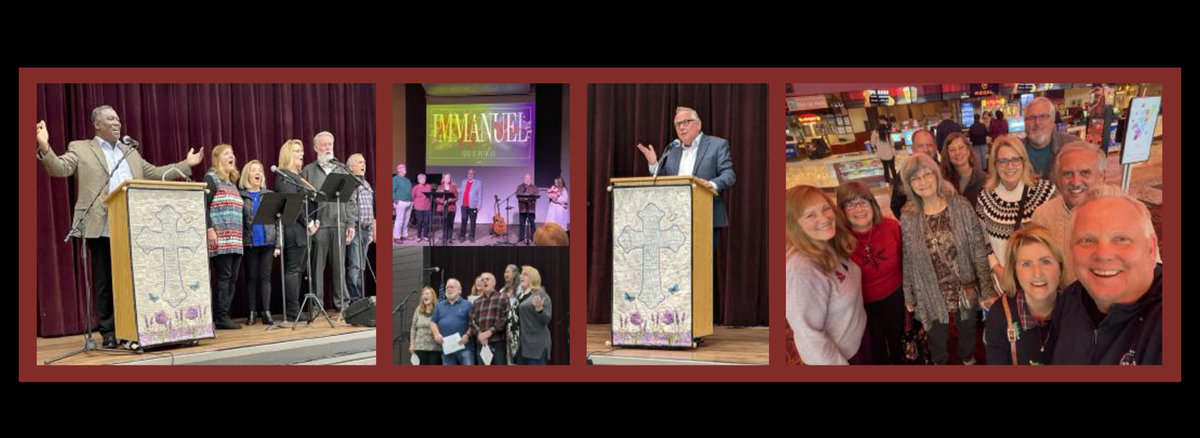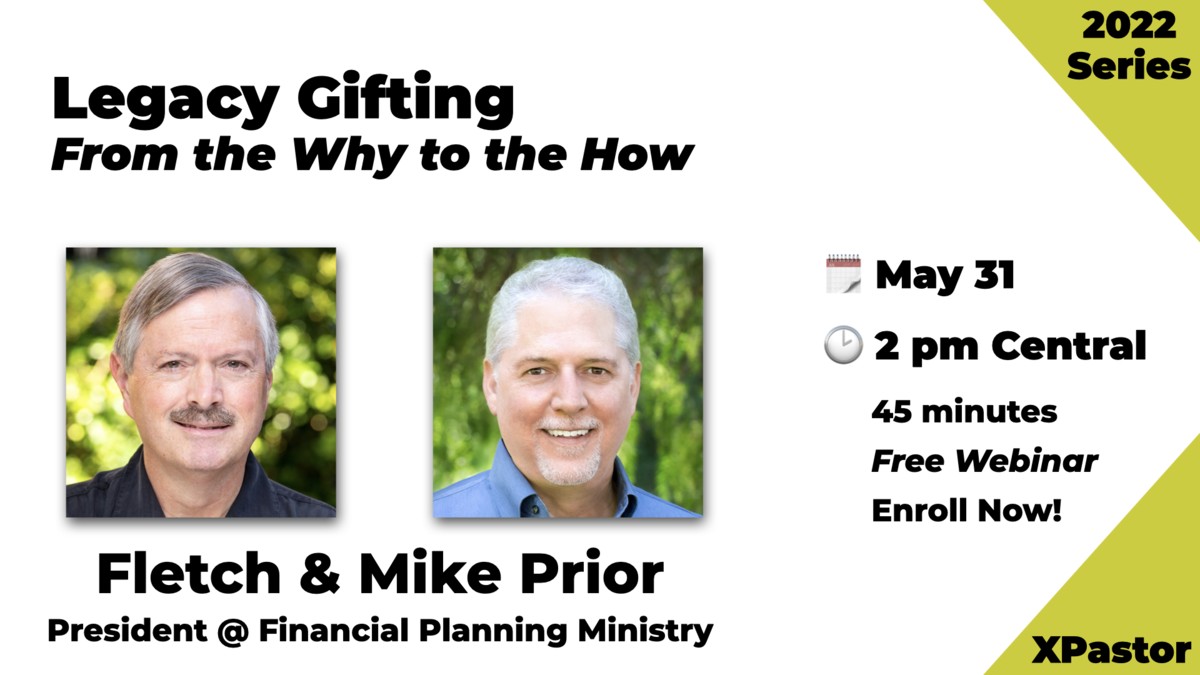One year ago, we were tossing around words new to our experience. AIG, financial meltdown, Wall Street collapse, and recession all rushed into our harried conversations. As church leaders, those words pointed us to one primary question: what will happen to our giving?
That question was often couched in fear and bewilderment as the American church had long forgotten financial challenges. More private conversations among leaders spoke of contingency plans and planning for staff layoffs. Some churches went so far as to have multiple levels of contingency plans in case of a worst-case scenario.
One year later, the conversations have a surprisingly different tone. Some churches have indeed experienced loss of income and the deep pain of releasing staff. But as we begin to see research results, many churches experienced income gains this year compared to 2009 (two-thirds of congregations reported that their fundraising receipts increased or remained the same in the first half of 2009, compared to last year). We, as leaders, remain on guard but have begun to settle into a new normal—a normal that is much less demanding and nerve-racking than last year.
Why settle for a new normal and engaging cruise control moving forward? The more effective churches will continue to press for a culture of openhandedness and radical generosity that paints a compelling picture to our watching world.
Churches have demonstrated well that they can be adequately funded in difficult times. How can your church position itself to be abundantly funded in this new environment?
Growing and daring churches should consider these ten issues in preparation for the coming year.
1. Passionate vision will continue to attract abundant giving
People want to make a difference even in the midst of troubled times. People, however, are no longer content with passive vision casting and predictable vision language. While they are open to giving, people are more demanding to know what they are giving to. We must communicate and craft vision in a compelling manner in an environment cluttered with fuzzy vision.
When our culture had excess funds to give, people often gave leadership a pass in vision communication. With more giving now in the sacrificial category, donors are more discerning and seek a more articulated, specific understanding of God’s call on a church. Ministries and churches with weak, rushed, crisis-oriented vision send an unintended message to donors that their mission is irrelevant.
The church that regularly and innovatively tells the narrative of a compelling vision and celebrates the successes will rarely be underfunded.
2. Expand spiritual formation as the underlying foundation of generosity
Based on emerging data and scores of conversations with churches and leaders, the underlying sense is that we have weathered the worst of the recession. While it may not get better soon, the prevailing idea is that it will most likely not get any uglier. We have settled into a more predictable pattern and understanding.
This settled feeling creates a significant danger to generosity. Our culture may be returning to a pattern of consumerism without the sense of danger from a wounded economy. For church leadership, the danger is for people to return to comfortable, easy giving and lose the sense of urgency in radical generosity that mirrors the heart of our God.
Many leaders have expressed regret that they ineffectively communicated stewardship during robust economic times. In the midst of the crisis, pastoral communication had less impact because the foundations of spiritual formations around generosity were minimal. Now is not the time to allow the growing comfort to ease the teaching, preaching, modeling and celebration of liberality. Rather than relax, consistently connecting spiritual formation and generosity will have a dynamic cumulative effect.
The church that connects spiritual formation and finances will not be deficient. People will give generously if there is a pulsating bond between their faith and finances.
3. Generosity has become the new evangelism
When I first heard Chris Willard of Leadership Network make this statement, my own heart immediately resonated with the uniqueness of the opportunity.
We can debate apologetics, preach articulate sermons, dazzle an audience with coordinated lights and sound, and build imaginative structures. The impact of these investments is multiplied many times over when we simply and unapologetically give ourselves away.
The watching world is confounded when we build wells in communities lacking fresh water or when we give medical care to those who lack such attention. Our faith takes on deep validation when we serve the community, feed the homeless, and adopt orphans.
We may be in a season when our sweeping generosity best demonstrates our God.
The church that gives itself away may become the richest in reaching people far from God.
4. Churches must speak a different language in teaching and celebrating generosity
Even though our culture has entered a new, dangerous economic period, many leaders have continued to communicate to their church in a predictable, safe language.
We have acknowledged the crisis. We have appealed to God’s people. Many, for the most part, have maintained their ministry and operations. But have we, as leaders, really made headway into upgrading the fundamental patterns of lifestyle generosity? In looking at many examples of church giving data, there is little significant change in giving patterns. We have maintained the giving levels. What would it take to increase and expand the giving patterns, to move beyond the norm of a few giving the greatest percentage of operating income?
Three changes are at the core of fundamental shifts.
- One-size-fits-all communication has few hearers. Most church communication takes place in the worship experience with the important story lines announced from the platform, leaving the non-vital news to the bulletin or weekly email. While such communication is easy for leadership, our church has multiple layers of faith journeys that require unique conversations with various groups rather than an assembly line approach. A surplus giver asks different questions than someone new to their faith. Why do 50% or more of your regular attendees give nothing and consistently disengage their faith with their finances? Why do ministries other than your church receive more money from your leaders? The conversations with each group are not that hard once you understand the unique questions each group is asking of leadership.
- Be clear about connecting financial ministries to the church giving. Many of us employ the use of various resources and classes to assist households in understanding finances as a believer. What amazes me is the similarity of giving patterns with churches that have these ministries and those who do not. While these ministries are essential, sound, and proven to help individuals, there are missing elements in connecting the dots with the principles in these classes to actual increased giving in the church. Simply offering classes and counting the people in those courses is not enough to impact giving in a meaningful way.
- Continually and intentionally build trust deposits with your people. There is a significant correlation between trust and sacrificial giving. People will give out of loyalty and a sense of obligation. People give enthusiastically when the deposit in the trust account is high. Trust is built through transparency, authentic communication, and high integrity in fiscal responsibility in leaders.
5. Consistent, heart-felt expressions of gratitude
Recently a leader told me that he had been at a well-known, leading church for seventeen years. He had given faithfully, generously, and passionately. When we talked about a simple thank you to the church givers, he was silent for a moment and said that as far as he knew, he had never been thanked for any of his giving in all of those years.
We know that biblical generosity comes without strings attached. Christ followers give without a sense of something in return, apart from building up treasure in heaven (interestingly, Jesus commanded us to build such a treasure).
Yet, we as leaders tend to take our most faithful givers for granted and fail to give a common courtesy of a simple thank you. Of course, we dutifully say a generic thank you when we mail giving statements. We get a more enthusiastic “my pleasure,” however, from the fast food server.
There are many openings to say thank you.
One church says thank you before each offering and takes thirty seconds to tell how last week’s offering was spent by way of a story, such as paying an electric bill for a local family. Other churches send a handwritten note for the first time gift from a household (huge impact, by the way). Some churches send out a periodic letter simply to say thank you and tell a story about the impact of their giving. Other leaders weave generosity and thank you into moments of teaching.
As much as we can connect the person’s giving to the mission, to changed lives, to a authentic heart of appreciation from leaders, watch your giving hit new heights.
6. Church leaders who model openhandedness have multiplied impact on the church culture
Speed of the leadership will always dictate the speed of the team. Leaders must give the church a sense of how they personally are handling the challenges and how they are responding to the difficult times. Leaders share their journey—not as an ego builder, but appropriately modeling how to give during this kind of season.
One leader shared that his family has increased their giving to the church by an additional four percent. This leader was wise in not sharing an actual monetary amount. He simply expressed his passion for the mission and how he was not wavering in seeing that mission come to reality.
In an appropriate setting, one family expressed that they were fine financially and were increasing their giving to cover what some families could no longer give.
People are intrinsically curious. “Are our leaders in? What are they doing? Teach, model, inspire me to overcome my fears by your example.”
Leaders that authentically share their generous journey and personal openhandedness prompt others to do the same in a season of uncertainty.
7. Larger gifts are still in play but require more deliberate conversations
The fall of 2008 saw very few larger gifts. Surplus and higher capacity donors were on the sidelines with a rare uncertainty about their asset base.
The early results in fall 2009 see a much different reality. I have seen gifts of $1,000,000, along with other larger gifts that have been surprising, to say the least. When a donor writes a check for $250,000 and cheers on the project, the trends are encouraging.
While these gifts are now back in play, the process of engaging those gifts is far more demanding and complex. Higher capacity donors are asking more challenging questions, are engaged more in the measurements of success, and sense a very deep calling to share their resources. A leader can no longer trust a single conversation to ask for and receive a major gift. More communication in advance, deliberate connection of the donor’s vision to the project, and multiple conversations are required to convince a higher capacity donor that your church project represents the best eternal investment that could be made in this season.
Some people are actually making greater money in this environment. Could God have prepared them for such a time as this?
The leaders that take the care and relational credibility to engage a higher capacity donor will see larger gifts.
8. Major projects are back in play
Many churches are moving forward with projects that multiply their mission. These projects are a combination of human needs, multisite campus launches, construction, renovation, and mergers with other church bodies. While the financial scope of these projects is generally less than before the recession, leaders are finding that the cost of delay is greater than the risk of moving forward.
For some churches, renovating current space can be huge and cost effective. David Evans, of Mantel Teter Architects, expresses it well. Now is a great time for churches to renew, reuse, and repurpose the facilities they have. How can we now utilize and recast our current space to fresh uses?
For example, one church relocated its office to an adjacent building at a very reasonable lease structure. They took the former office space and expanding room for the exploding children’s ministry. The cost of the switch was far less than new construction.
For the church with compelling needs, major projects are now on the table.
Silence and passivity are no longer options.
Major projects can be successful for the church that creates the meaning for that project in an environment of generosity.
9. Cash reserves have far more meaning both to your congregation and to the lending world
One of the major hurdles in project expansion is the very tight credit market. Church lenders have changed the rules for lending and, as a result, fewer churches qualify for loans.
Lenders are now especially interested in excess cash flow and the cash reserves that are reflected on your balance sheet. Banks are not at all impressed that your church is debt free and that you have a good income. They are now focused on whether you have the free cash flow to pay for the loan. The metrics have radically changed in the lending discussion.
Prior to the recession, churches tended to spend any increased revenue. Hiring new staff, pay raises, upgraded technical tools, and many expansion options were on each planning budget.
A church is wise in this environment to build cash reserves and not expand general spending. If you believe that you will need a loan in the next year, now is the time to reset your balance to qualify for that loan.
An added bonus to this step is the confidence that your people will have in leaders who manage cash well. People need to have continual trust that leaders are moving forward with the mission, but are attentive to sound cash management.
Churches are also using this time to make noteworthy changes in its ministry structure. Simply because some people take advantage of a program is no reason to continue that program.
One client this year discovered how much of what they offered was no longer relevant. They were opening their first multisite on a limited budget and asked themselves what was happening on the original campus that demanded export and was essential to their DNA at the new location. The staff came to a frightening conclusion that only a few of their programming options were indeed essential and mission critical. Rather than duplicate those programs at the new campus, they discontinued those programs at the original campus, including the reallocation or releasing of staff assigned to those programs. Nearly a year into the changes, no one has missed the programs, even after an initial flurry of protest.
Churches that position cash now for greater mission investment will multiply their efforts in this environment.
10. Prepare for surprisingly cost effective commercial space to be available for your space requirements
The downturn is also creating an opportunity for churches in their space requirements. We have had the residential market hit already. The commercial market appears to be coming to a crisis mode in 2010. Many commercial property loans are coming due and owners in a weakened position will not be able to refinance the distressed properties.
Bryan Miles of Cogun, a builder of creative ministry spaces, said recently that opportunity is in supply—the current economic conditions are forcing big-box retailers to shed spaces ranging from 60,000 to 120,000 square feet—at very reasonable prices.
I have a client that just purchased such a space at a price nearly 75% less than what the big box sold for just two years ago.
The cost for purchase and renovation of these spaces can be substantially lower than we have ever considered. Parking, infrastructure, utilities, location, and accessibility have all already been completed. With these properties at an attractive price, churches may be in a position to capitalize on the opportunity.
As we enter into conversations for 2010 ministry plans, give yourselves permission as leaders to explore bold initiatives in the generosity environment of your church. The window of opportunity is about as open as it will ever be. Silence and status quo will strangle your mission and ministry. Dare yourselves to do better.











